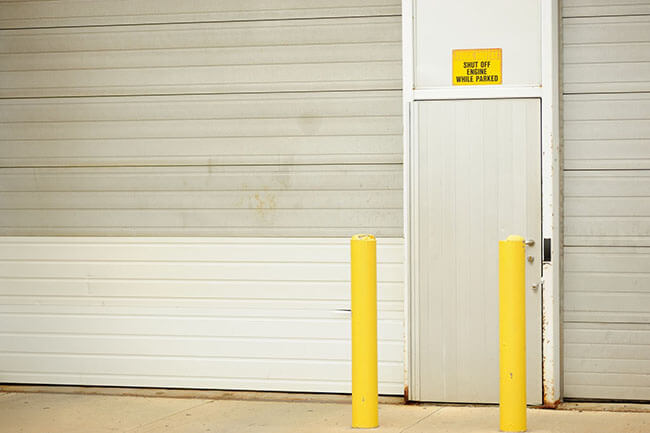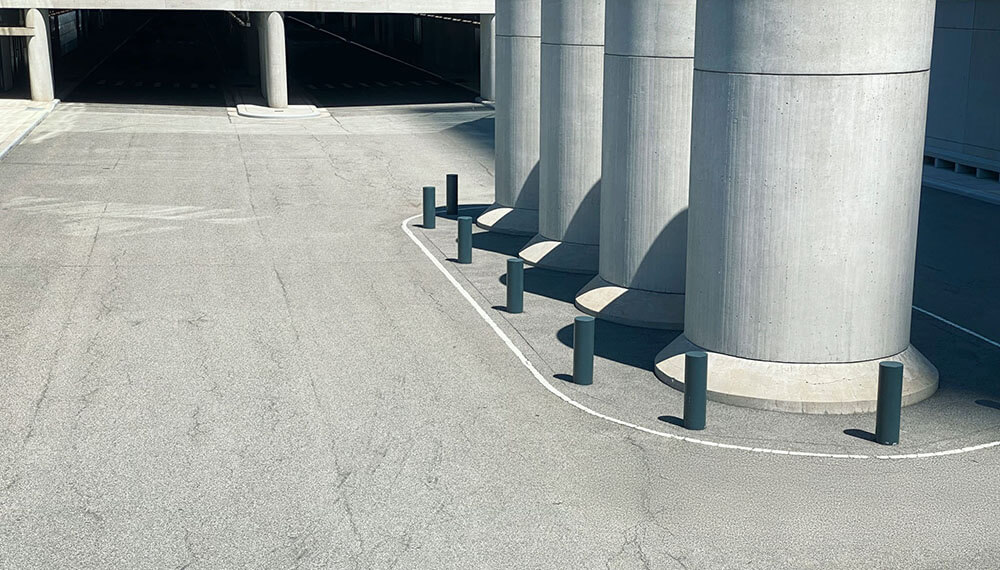Introduction
Ensuring public safety in urban environments is a growing priority for city planners, businesses, and governments worldwide. With increasing threats from vehicle accidents, reckless driving, and intentional attacks, protective measures have become essential in modern city infrastructure. Among the most effective solutions, bollards play a crucial role in preventing unauthorized vehicle access, safeguarding pedestrians, and protecting critical infrastructure.
Why Are Bollards Important for Public Safety?
- Prevent vehicle intrusions into pedestrian areas.
- Minimize the risk of accidental crashes into storefronts and public spaces.
- Enhance traffic control by guiding vehicles safely through urban areas.
- Serve as a deterrent against vehicle-ramming attacks.
The Growing Need for Urban Safety Solutions
- Pedestrian-friendly cities are on the rise, increasing the need for secure walkways.
- Reports show that accidental vehicle-into-building crashes cause significant injuries and fatalities each year.
- High-profile terrorist attacks involving vehicles have led to stricter security measures in public areas.
As cities continue to expand, integrating bollards into urban landscapes is a key strategy for enhancing public safety. The following sections will explore global best practices, innovative technologies, and how different countries successfully use bollards to create safer environments.

Understanding the Role of Bollards in Public Safety
How Bornes Improve Public Safety
The strategic use of bollards has transformed urban security, offering a versatile and effective solution for managing vehicle access while maintaining open spaces for pedestrians. These barriers are not just protective structures but essential elements in city planning, retail security, and event management.
Key Ways Bollards Enhance Public Safety:
- Protect Pedestrian Walkways – Prevents vehicles from accidentally or intentionally entering crowded areas.
- Prevent Vehicle-Intrusion Accidents – Reduces the risk of storefront crashes and roadway miscalculations.
- Enhance Traffic Management – Helps direct traffic flow, marking restricted and pedestrian-only zones.
- Mitigate Terrorist Threats – Serves as a physical barrier against vehicle-ramming attacks.
- Improve Public Space Accessibility – Retractable and removable bollards allow flexible access while maintaining security.
The Growing Need for Urban Safety Measures
With the increasing population density in cities, urban safety has become a priority. The integration of bollards into public infrastructure is now a standard security measure in many countries.
Why Cities Are Investing in Bollards for Public Safety:
- Rising Pedestrian Traffic – More people are walking and cycling in urban areas, necessitating clear separation from vehicles.
- Increase in Accidental Storefront Collisions – Data shows thousands of vehicle-into-building crashes occur annually, many resulting in severe injuries.
- Growing Threat of Vehicle Attacks – In recent years, high-profile vehicle-ramming incidents have led to a surge in security-focused urban planning.
- Flexible Urban Design Needs – Cities require security measures that blend with aesthetics while providing strong protection.
The widespread adoption of bollards highlights their importance in creating secure, people-friendly cities.
Global Best Practices in Bollard Implementation
Case Studies from Around the World
Different countries have implemented bollards as part of their public safety strategies, adapting them to their unique urban environments and security concerns. These case studies highlight successful deployments that have improved pedestrian safety, traffic control, and security against vehicle-based threats.
London, UK: Securing Pedestrian Zones
- Following multiple vehicle-ramming attacks, London installed high-security bollards around major landmarks.
- Pedestrian-heavy areas like Oxford Street and Westminster Bridge now feature impact-resistant bollards.
- The addition of shallow-mount bollards has minimized underground infrastructure disruptions.
New York City, USA: Times Square Protection
- Times Square, a high-footfall area, required an unobtrusive yet effective solution to prevent vehicle intrusions.
- Reinforced steel bollards were installed to stop high-speed crashes while maintaining open pedestrian spaces.
- These bollards successfully prevented further incidents after past vehicle attacks.
Melbourne, Australia: Integrated Public Safety Measures
- The city introduced removable and retractable bollards to protect event venues and public squares.
- This approach allows authorities to adapt security measures based on crowd density and traffic flow.
- The use of aesthetic bollards ensures public spaces remain welcoming and visually appealing.

How Countries Adapt Bollards to Their Infrastructure?
Different nations implement bollards based on urban density, historical preservation needs, and security requirements.
Europe: Blending Safety with Aesthetics
- Many European cities use ornamental bollards that preserve historical architecture while ensuring safety.
- Locations like Paris and Rome integrate bollards with street furniture to maintain a seamless urban design.
Asia: Protecting High-Density Public Spaces
- Countries like Japan and Singapore deploy smart bollards that retract based on traffic and emergency needs.
- Bollards with built-in sensors are used in train stations, airports, and business districts for added security.
North America: High-Security Standards
- U.S. cities prioritize crash-rated bollards in government buildings, financial hubs, and commercial districts.
- K-rated bollards (K4, K8, K12) are widely used to stop high-speed vehicle attacks.
By studying these global best practices, cities can adopt effective bollard strategies that enhance public safety while maintaining urban functionality.
Choosing the Right Bollards for Public Spaces
Types of Bollards Used for Public Safety
Selecting the appropriate bollards for public spaces depends on security requirements, urban design, and traffic management needs. Different types of bollards provide varying levels of protection and flexibility.
Bornes fixes
- Permanently installed to provide long-term security.
- Commonly used around government buildings, embassies, and commercial centers.
- Designed to stop high-impact collisions with reinforced steel or concrete.
Bornes rétractables
- Can be raised or lowered to allow controlled vehicle access.
- Used in areas where restricted vehicle entry is required at specific times, such as public squares and event venues.
- Available in automatic (hydraulic or electric) and manual options.
Bornes amovibles
- Provide temporary security solutions for changing traffic conditions or special events.
- Installed in parks, pedestrian streets, and temporary road closures.
- Lightweight designs allow for quick installation and removal.
Bollard Placement Strategies
Proper bollard placement is essential to maximize effectiveness while maintaining urban accessibility.
Spacing Considerations
- Bornes should be placed close enough to prevent vehicle intrusion but far enough apart for pedestrians and wheelchair users.
- Standard spacing is 3 to 5 feet apart, depending on security requirements.
Integration with Urban Design
- Many cities use decorative bollards that blend with historical and modern architecture.
- Bornes are often installed with landscaping, seating areas, and lighting elements to enhance public spaces.
Compliance with Safety Regulations
- Many countries follow ASTM, PAS 68, or K-rated bollard standards to ensure effectiveness.
- Proper depth and foundation requirements are essential for high-security bollards.
By selecting the right bollards and placement strategies, cities can improve pedestrian safety, regulate traffic, and enhance security without compromising accessibility.

Innovations in Bollard Technology
Smart Bollards and AI Integration
The advancement of bollard technology has led to the development of smart security systems that enhance public safety while integrating with modern urban infrastructure.
Key Features of Smart Bollards:
- Equipped with sensors and surveillance cameras for real-time monitoring.
- Can automatically retract or deploy based on traffic patterns and security alerts.
- Integrated with law enforcement networks to detect suspicious activities.
Where Smart Bollards Are Used:
- Airports and transportation hubs to regulate vehicle access dynamically.
- High-security zones such as embassies and financial districts.
- Event venues where traffic flow changes frequently.
Energy-Absorbing Bollards
Traditional bollards are designed to stop vehicles instantly, but energy-absorbing bollards focus on reducing impact force to minimize injuries and collateral damage.
Benefits of Energy-Absorbing Bollards:
- Gradually decelerate an incoming vehicle instead of an abrupt stop.
- Reduce the risk of severe injuries for drivers and pedestrians.
- Effective for public squares, school zones, and crowded pedestrian areas.
Shallow-Mount Bollards for Modern Cities
In densely populated cities, deep excavation for bollard installation can be challenging. Shallow-mount bollards provide a solution by requiring minimal foundation depth while maintaining high-impact resistance.
Advantages of Shallow-Mount Bollards:
- Faster and cost-effective installation with minimal ground disruption.
- Can be installed above underground utilities without interference.
- Ideal for historical sites, pedestrian streets, and urban redevelopment projects.
By leveraging these innovative bollard technologies, cities can enhance public safety, streamline security measures, and adapt to evolving urban landscapes.

FAQ
1. How Do Bornes Improve Public Safety?
- Bornes create physical barriers that prevent unauthorized vehicle access to pedestrian zones.
- They help reduce the risk of vehicle-into-building crashes in busy commercial areas.
- Used in traffic control, bollards guide vehicles and separate roadways from pedestrian walkways.
2. What Are the Different Types of Security Bollards?
- Fixed Bollards – Permanent structures for long-term security at high-risk locations.
- Retractable Bollards – Can be raised or lowered to allow controlled vehicle access.
- Removable Bollards – Provide temporary barriers for events and restricted areas.
3. How Do Countries Determine Where to Install Bollards?
- Authorities conduct risk assessments to identify vulnerable areas.
- Bornes are strategically placed in crowded spaces, storefronts, and government buildings.
- Urban planners consider aesthetics, pedestrian accessibility, and emergency access when installing bollards.
4. What Materials Are Best for High-Security Bollards?
- Steel-reinforced concrete is the most common material for impact-resistant bollards.
- Stainless steel bollards provide durability and a modern aesthetic.
- Energy-absorbing bollards reduce the force of vehicle impacts, minimizing damage.
5. Are Bornes Regulated by International Safety Standards?
- Many countries follow ASTM F2656, PAS 68, and K-rating standards to ensure bollards meet crash resistance requirements.
- Installation guidelines ensure proper spacing, foundation depth, and compliance with security regulations.
- Urban safety agencies regularly update regulations based on emerging threats and technological advancements.
By understanding how bollards enhance public safety and following best practices, cities can create secure, pedestrian-friendly environments worldwide.
Conclusion
The implementation of bollards in urban spaces has become a critical component of public safety. As cities continue to evolve, the need for effective vehicle barriers grows to protect pedestrians, storefronts, and high-risk areas.
Principaux enseignements :
- Bornes serve as essential security measures against vehicle intrusions and terrorist threats.
- Different bollard types and placement strategies cater to various security and aesthetic needs.
- Global best practices showcase how cities worldwide successfully integrate bollards into urban planning.
- Innovations in bollard technology, such as smart bollards and energy-absorbing designs, enhance safety while preserving accessibility.
- Compliance with international safety standards ensures that bollards remain effective in mitigating risks.
By adopting best practices from around the world, city planners, businesses, and governments can create safer, more secure environments while maintaining the flow and functionality of public spaces.




